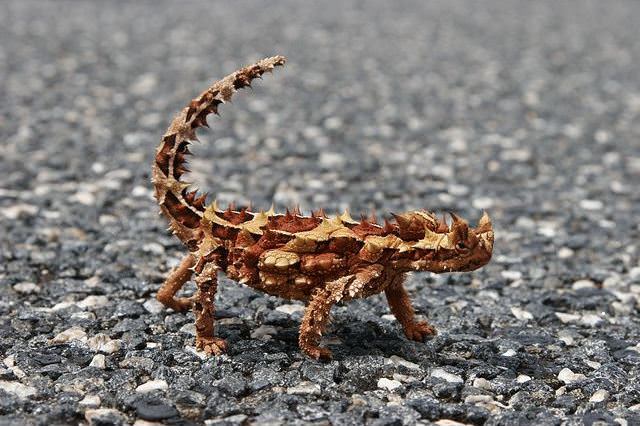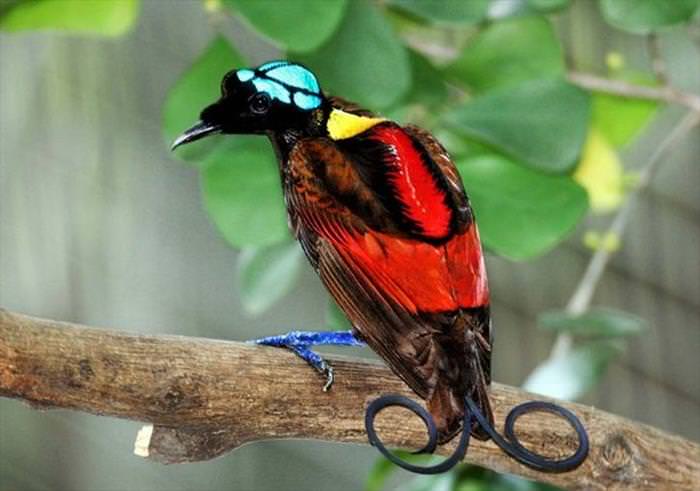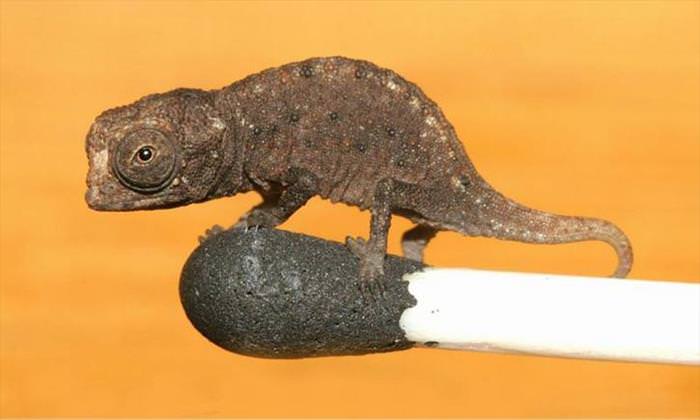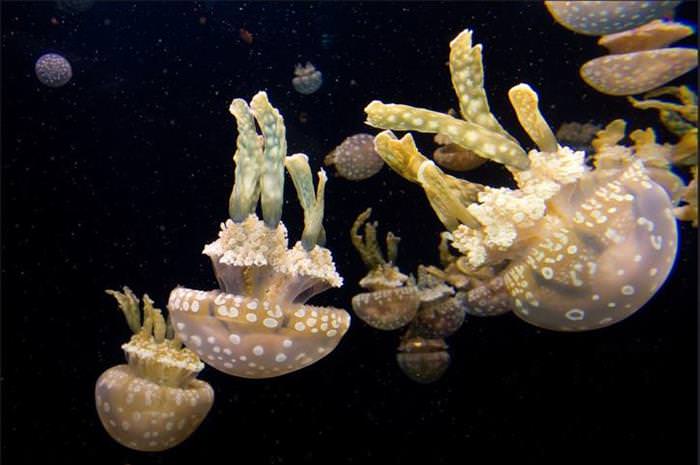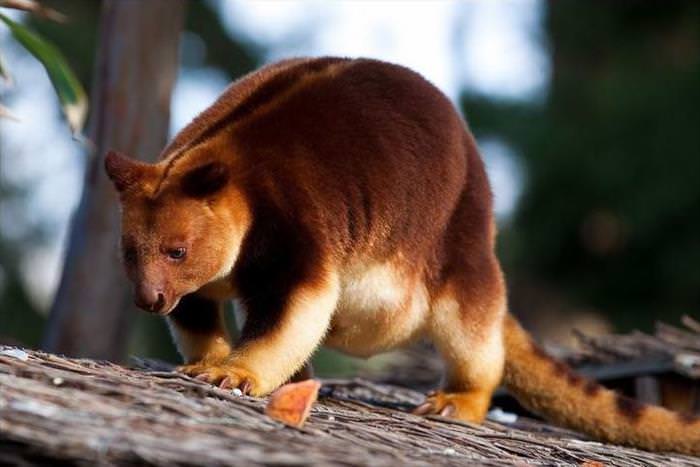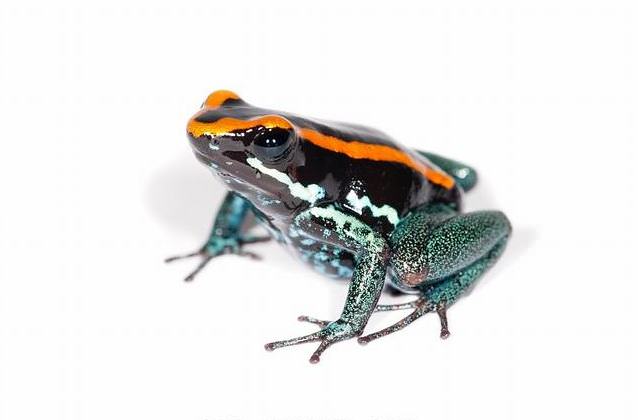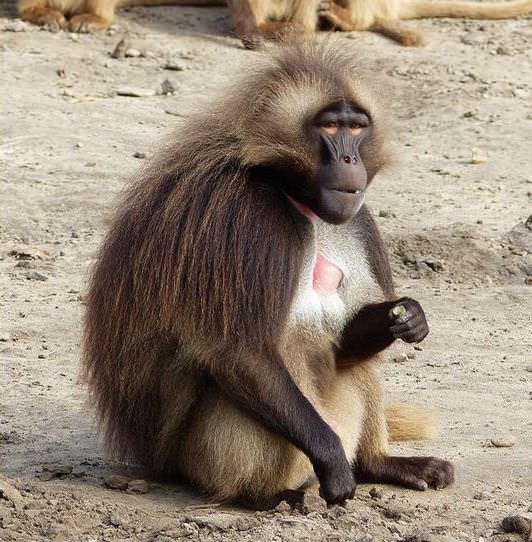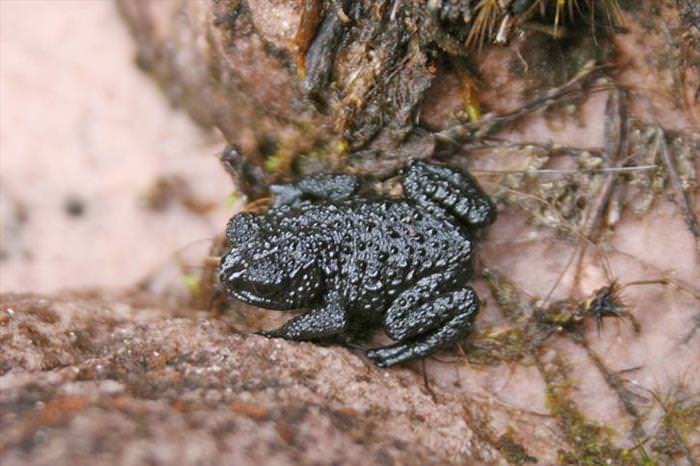Every animal species has a natural habitat that suits the conditions it was specialized to live in. Some particular species are so specialized that their habitats are limited to only one place in the world, making them extremely rare and a precious hyper-endemic species. If you spot one of these species, you must definitely consider yourself lucky, especially since some of them boast the most bizarre characteristics you've ever seen or heard of.
1. Thorny Devil Lizard - Australia
The thorny devil lizard, Moloch horridus, looks dangerous due to the fearsome spikes on its skin, however in reality it is generally harmless. This species has one odd specialization that enables it to drink water through its skin, not by absorption but rather through capillary action. Therefore, if this animal puts its foot in a water puddle, a network of channels in the scales act as tiny straws and carry the water to its mouth.
2. Wilson's bird-of-paradise - Indonesia
Wilson's bird of paradise, Cicinnurus respublica, is found on only two tiny islands, Waigeo and Batanta, in the remote collection of islands called Raja Ampat, off West Papua, an Indonesian province of New Guinea. Although it's hard to find, it's easy to recognize with its plumage being so vibrant: A turquoise crown, emerald green breast and tail feathers curled round like Captain Hook's moustache. This animal has a particular way of preparing for a mating display - it creates an arena by obsessively clearing away loose leaves and twigs.
Source: Serhanoksay, Wikimedia Commons
3. Brookesia micra - Madagascar
Brookesia micra is the smallest chameleon in the world, measuring only up to 1.2 inches long when fully grown. They are only found on a tiny rock islet called Nosy, off the northern tip of Madagascar, which was only recently discovered. Here, they live in the cracks of the island's rocky terrain. They have a limited range of movement, which is said to be explained by their extreme dwarfism.
Source: Frank Glaw, PLOS, Wikimedia Commons
4. Texas blind salamander - Texas
As the name suggests, Texas blind salamander, Eurycea rathbuni, lacks vision because of an unusual absence of eyes. It also hasn't got any skin pigment, and it's got frond-like external gills coming out of its neck. Most of the time, you'll find it roaming in the water-filled caves connected to the Edwards Aquifer in Hays County, Texas, where it lives in absolute darkness. Despite its limited vision, this species makes a very skilled predator of snails and shrimp, which it catches by sensing pressure waves in the water.
Source: Brian Gratwicke, Flickr
5. Papuan jellyfish - Palau
In a marine lake found on one of the islands in the Pacific Island chain of Palau, Eil Malk, an overwhelming population of golden jellyfish can be found. These golden jellies, Mastigias papua etpisoni, have been cut off from their oceanic relatives for millions of years, and as a result, lost much of their sting. They have developed a symbiotic relationship with the algae that live in their tissues, giving them their distinctive golden color. In order to live on these algae, the jellyfish have to make a daily migration across the lake, following the arc of the sun.
6. Matschie's tree kangaroo - Papua New Guinea
The Matschie's tree kangaroo, Dendrolagus matshiei, may be spotted munching leaves in the treetops of the cloud forests in Huon Peninsula, Papua New Guinea. This magnificent animal actually spends most of its life doing this. It's got brown fur and golden paws, belly and tail, and like other kangaroos, a pouch for carrying and nursing its joeys.
7. Golfo Dulce Poison Dart Frog - Costa Rica
Costa Rica's Osa Peninsula has to be the most biologically diverse spot in the country, home to nearly half of the country's flora and fauna. Amongst all the creatures is the striking Golfo Dulce poison dart frog, Phyllobates vittatus, which is distinguished by the unique red stripes along the sides of its body, contrasting strongly against the black color of its back. This frog's skin holds a powerful neurotoxin that can be seriously poisonous, possibly even causing seizures and paralysis.
8. Gelada - Ethiopia
This particular monkey species, the Gelada, Theropithecus gelada, is endemic to the highlands of Ethiopia, where it can be found sitting in fields chewing on grass. Its baboon-like features and the red bare-skin triangles found on the chests of both males and females give this beautiful species its identity. At night, the Geladas climb cliff faces in search for the right ledges to sleep on.
9. Pink Land Iguana - Galapagos Islands
One of the rarest species found on the Galapagos Islands is the pink land iguana, Conolophus marthae, which lives in a stretch of 25 square kilometers on top of the Wolf Volcano on Isabela Island. It is said that this species has split from other land iguanas for over 6 million years. Unfortunately, researchers claim that the small numbers of this unique iguana renders them seriously threatened.
Source: Galapagos National Park Directorate
10. Pebble Toad - Venezuela
The highlands of Venezuela, where the flat-topped mountains (tepuis) form isolated islands in the clouds, is home to the tiny, rough-textured Pebble Toad, Oreophrynella nigra. This toad species has one bizarre defense mechanism it uses when being attacked by a predator (such as the tarantula) - it shapes its body into a ball and rolls downhill, bouncing away from danger like a loose stone.
Source: Gérard Vigo, Wikimedia Commons

